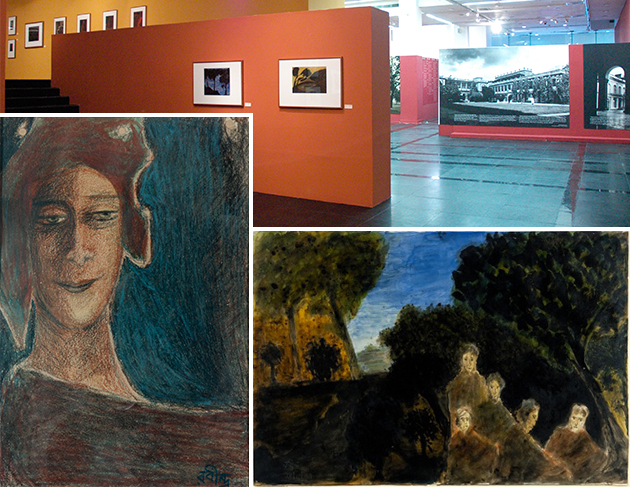
The National Gallery of Modern Art, located in the arts precinct of Kala Ghoda, hosts a collection of some of the best examples of modern art in Mumbai. Its exhibition, “The Last Harvest: Paintings of Rabindranath Tagore” is certainly no exception, featuring a collection of more than 100 works by one of India’s most loved and famous artists.
Curated by professor Raman Siva Kumar of Visva-Bharati University, “The Last Harvest” (running until June 15) is a celebration of Tagore’s 152nd birthday. It includes works selected from prestigious collections across India and has been shown in nine major museums around the world, including the Asia Society in New York, Victoria and Albert Museum in London and the National Gallery of Modern and Contemporary Art in Rome.
Tagore was renowned for his literature, poetry and philosophy and was the first non-European to be awarded the Nobel Prize in Literature in 1913, yet he only took up fine art as a discipline at the age of 67. Despite his relatively late entrance to the field, he is still considered to be one of India’s most revered modern artists, and this exhibition demonstrates why.
A prolific painter, Tagore produced nearly 2,000 works in 13 years, and The Last Harvest, demonstrating a wide variety of artistic influences from Art Nouveau to Japanese scenes, focuses on a number of works he produced on paper.
Although Tagore’s work is hard to define (he created his own personal style from experiences and studies), the exhibition is broken up into four distinct sections. First, there are early paintings that demonstrate his playful side, transforming geometrical shapes that could almost be doodles from the ink of a pen into subliminal forms such as birds. The second section highlights stunning landscapes where you can almost feel his melancholy longing to be in the scene, similar to some of his poetry. The third celebrates the human body and its many gestures, and the final section focuses on the theatrical expressions of nameless human faces, leaving the viewer to use their own imagination to create a story for the figures.
While it has been more than 70 years since Tagore has died, his work is still considered relevant today and seems to transcend age in many ways. The works are clearly very personal, yet they don’t exclude the viewer from being able to feel part of them, creating universal appeal. While a particular piece may not trigger your senses, the next may evoke deep emotions.
Photos Courtesy of National Gallery of Modern Art, Rabindranath Tagore

